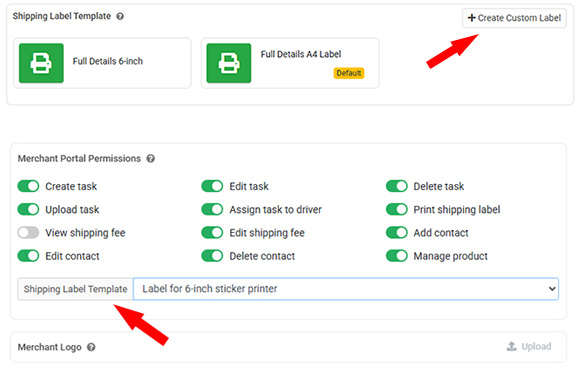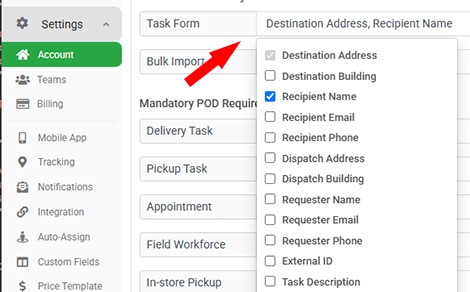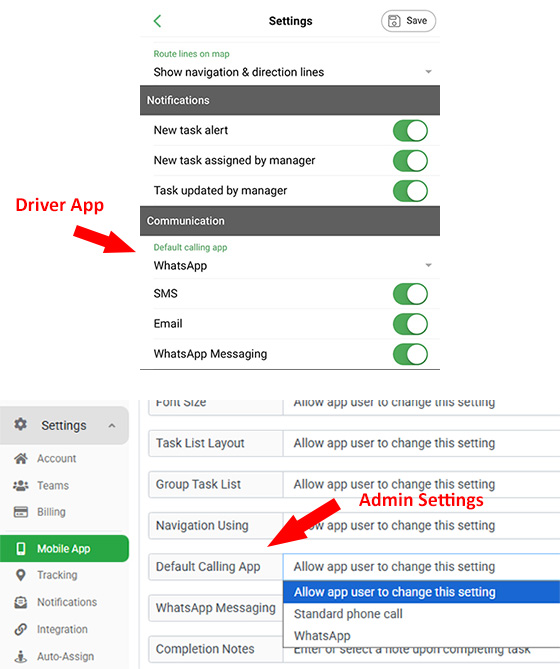Welcome to the November 2025 release notes! We’re excited to share the latest updates as our system continues to evolve with monthly updates. This release brings several powerful new features and improvements, including a new shipping label template system, customizable mandatory fields on the task form, default calling app settings, a convenient option to resend notifications, and much more. We hope you enjoy these new features!
1. Shipping Label Template Management
We’ve introduced a new Shipping Label Template Management feature that gives you full control over how your shipping labels are designed and printed. Labels can now be easily generated with key delivery details, presented in a clean, professional layout that supports standard A4 paper, sticker formats and POS receipt formats. Each label automatically includes a QR code and barcode for fast scanning through the mobile app, helping your team speed up dispatch and delivery workflows.
Previously, the system only allowed a single global label template shared by all teams and merchants. With this release, you can now create multiple label templates, each with its own design, layout, paper size, and print settings. Administrators can assign specific templates to merchants from the merchant management page, while dispatchers and merchants can conveniently select or update their default label template directly from their user profile page. This improvement makes it easier to personalize label appearance, match different branding styles, and streamline label printing across multiple business units in your organization.

2. Task Form Required Fields Configuration
We’ve added a powerful new feature to give administrators the ability to enforce data completeness during task creation across the dispatcher portal, merchant portal, and mobile apps. In the past, new tasks were sometimes created with missing key details such as the customer’s name or contact number. These incomplete records often caused delivery delays and unnecessary back-and-forth communication between drivers, dispatchers, and customers.
With this enhancement, administrators can now specify which fields are mandatory for every new task. When a user or merchant attempts to create a task, the system automatically checks for missing required information and displays clear validation alerts with guidance on what needs to be corrected. This ensures that every task record is accurate and complete from the start, minimizing manual follow-ups, improving operational consistency, and enhancing overall delivery efficiency.

3. Resend Notification Message
Our automated notification module allows the system to send customized emails, SMS messages, and webhook updates to customers based on task status changes. With this update, we’ve added a powerful new Resend Message feature that lets users manually resend any previous notification when needed.
This enhancement is particularly useful in various scenarios. For example, when a customer requests their confirmation email to be resent, or when you need to forward a message to a different email address or phone number. It also helps to resend webhook messages that may have failed to reach third-party systems due to temporary connection issues. To resend a message, simply open the relevant notification from the Task History section and click the Resend button. This makes managing communication and troubleshooting delivery issues faster and more efficient.

4. Default Calling App
We’ve enhanced the driver app experience with a new Default Calling App feature, giving drivers and administrators the flexibility to choose how to make phone calls to customers. Previously, when drivers tapped the call button in the app, it automatically launched the device’s default phone dialer. While convenient, this setup didn’t accommodate users in regions where alternative communication apps, like WhatsApp, are more commonly used for voice calls.
With this update, drivers and administrators can now configure WhatsApp as the default calling app. Once enabled, all call actions from the driver app will automatically initiate through WhatsApp instead of the regular phone dialer. This improvement provides better communication flexibility, helps drivers connect with customers through their preferred channels, and ensures more seamless, cost-effective communication across different regions.

